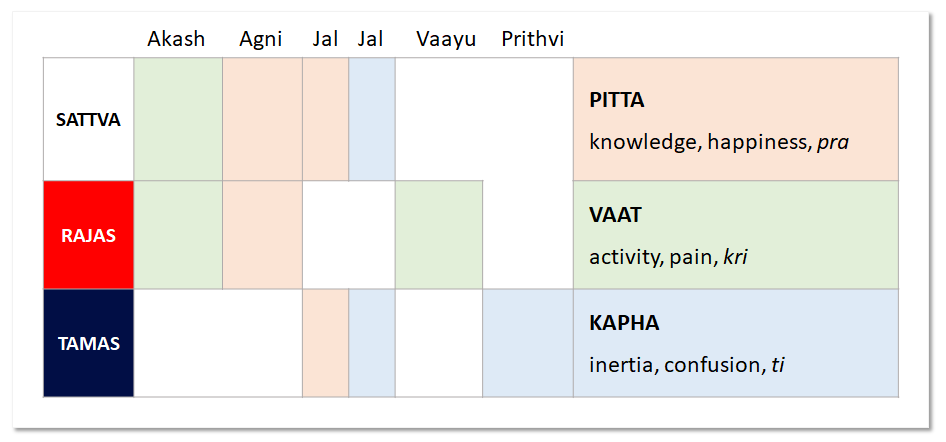Mind influences the physiology and pathology of the physical body
This fact was realized by the founding fathers of Ayurveda. Therefore, Ayurveda is defined as a philosophy and science of life. Many attempts have been made by Indian researchers to develop scale of measurement of Triguna. Similarly, KYC takes note of the habits and behaviour of a person to determine the underlying Guna which drives that person.
This questionnaire contains 14 questions and has multiple answers to it, select the one that describes you the best. There are no right or wrong answers
Each Guna gives certain characteristic qualities to the person, based on which an individual can be classified as belonging to that particular Guna type. Charaka and Sushruta recognize seven types or categories into which people can be classified, depending on the dominance of the Gunas in their body. They are said to belong to a particular Guna combination, as follows:
- People with dominant Sattva Guna.
- People with dominant Rajas Guna.
- People with dominant Tamas Guna.
- People with dominant Sattva–Rajas Guna combination.
- People with dominant Sattva–Tamas Guna combination.
- People with dominant Rajas–Tamas Guna combination.
- People with balanced Gunas or with Sattva–Rajas–Tamas Guna combination.
The corelation between 3 Prakriti (Sattva, Rajas, Tamas) and 3 Dosha (Vaat, Pitta, Kapha) is an amazing revelation of Ayurveda. It places heavy emphasis on the physical and psychological aspects of corollary of Triguna and Prakrati.
The manifestations of attributes are synthesized across these constructs. Vata Dosha is a combination of Sattva and Rajas Gunas but is referred to as being predominantly Rajasic—as Rajas Guna overtakes or is stronger than the Sattva Guna. Pitta Dosha is said to be more Sattvic in nature, though it has an element of Rajas and Tamas in it. Kapha Dosha is said to be more Tamasic in nature though it has an element of Sattva in it (but no Rajas).

